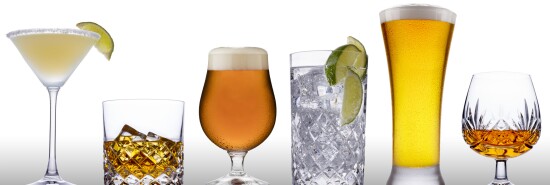
On brows high and low
Eric Felten
Ours is not the first time in which the country has divided between elite and nonelite status.
In the years after World War Two, an army of Americans went to college on the GI Bill. Few things have had such a significant impact on the nation’s life and culture. With an education came ambitions: Many of the men graduating in the late ‘40s lacked the wealth and social status typically enjoyed by college boys. But those men wanted to be seen as sophisticated; they had earned the right to take an interest in music, art, and literature. They had the audacity to express their opinions about intellectual issues, and in so doing, they posed a threat to the cultural hegemony of the existing elites.
LEGENDARY ROCK ‘N’ ROLL ARTIST REBUILDS AFTER MAUI FIRES
“Our heroes now are not the Carnegies or the Morgans but the intellectuals,” editor of Harper’s Magazine Russell Lynes proclaimed in 1949 with a particular shoutout to “the atomic scientists, the cultural historians, the writers, the commentators, the thinkers of global thoughts.” At least that was the opinion of Lynes, the writer, commentator, and thinker of global thoughts. “It isn’t wealth or family that makes prestige these days,” Lynes wrote. “It’s high thinking.”
There would no longer be an upper class, a middle class, or a lower class. Instead, Lynes predicted with a lighthearted maliciousness, the “old structure” would fall and be replaced with a new taxonomy for dividing the elegant brainiacs from the lumpen proles: High-Brow, Middle-Brows, and Low-Brow. The essay was a precis of his book, also of 1949, The Tastemakers.
Lynes was only half-serious in his observations, if that. He proved to be in on his own joke when he responded to a pitch from Life magazine to help create a chart delineating the fashions, the entertainments, and the beverages of the various brow elevations. The matrix was thus: On the left side of the spread was a vertical axis listing High-Brow, Upper Middle-Brow, Lower Middle-Brow, and Lower-Brow. Across the top of the pages was a horizontal axis with such categories as “ENTERTAINMENT.” The matrix was filled in, complete with cartoon illustrations, for the amusement of Life’s Middle-Brow readers. For example, High-Brow entertainment was “ballet,” and Upper Middle-Brow was the Theater. Lower Middle-Brow entertainment was “Musical extravaganza films,” and Low-Brows could be found at tatty movie houses taking in cowboy flicks.
But what of drinks? The social stratification revealed by what is in one’s glass has long since been jumbled. In 1949, the drinks, listed Low-Brow to High, were such: Beer, bourbon, and ginger ale as Low, a very dry martini with lemon peel as Middle, and, at the top, “A glass of ‘adequate little’ red wine.”
What has changed since 1949? Let’s start with bourbon and ginger ale. A simple two-ingredient highball, the bourbon and ginger must now be recognized as one of the most sophisticated of cocktails. It isn’t fancy, flashy, or frou-frou. It calls no attention to itself. You’re unlikely to find it on the drinks menu of a self-consciously artisanal cocktailian bar. It is clearly Upper-Middle.
Beer is tricky. Crap beer remains the province of Low-Brows (or is that “Lowenbrau”s?), but the explosion of good, interesting beer elevates suds to an Upper Middle-Brow taste.
Then there is the martini. It could be fully High-Brow. But the specification, in the Life chart, that the cocktail be “very dry” and that it be garnished with lemon peel, weighs it down-market. Such a martini is decidedly Upper Middle-Brow but could have been in the rarified atmosphere of the High-Brow if it weren’t afraid of vermouth.
Which leaves us with wine connoisseurship. There’s no longer anything intellectual about being satisfied with “adequate” wine.
Here is my Low-Brow to High-Brow designation of drinks. Low: canned cocktails. Lower Middle: any beer advertised on TV. Upper-Middle: a 4-1 martini, with olive. High-Brow: 30-year-old Laphroaig single malt Scotch.
CLICK HERE TO READ MORE FROM THE WASHINGTON EXAMINER
Eric Felten is the James Beard Award-winning author of How’s Your Drink?
